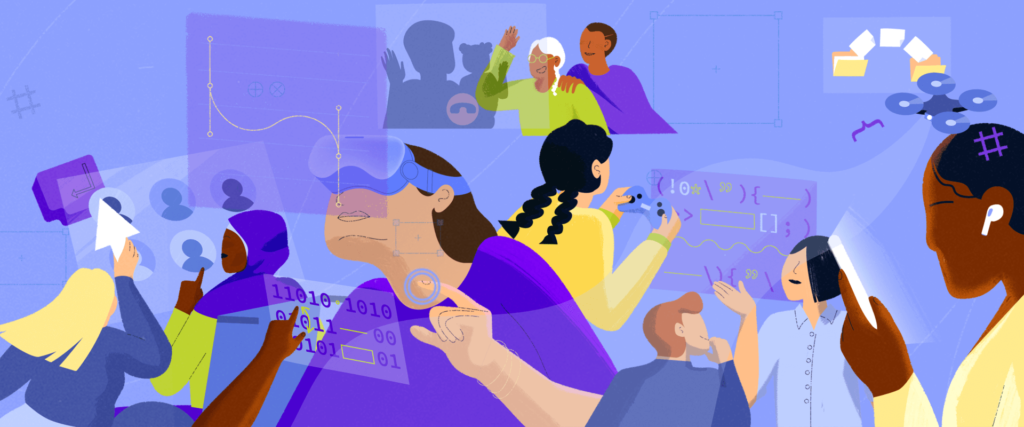International Women’s Day (IWD) is a global occasion which falls on the 8th of March every year, once a year serving as the centre of gravity in the women’s rights movement. This day marks as an indispensable day in the battle for the resolution of pressing matters including gender equality, reproductive rights and protection of the women against all forms of violence and abuse. Seeding with the labor organizations throughout North America and Europe during the 1st part of the 20th century, IWD is basically rooted on the universal movement of the female democratic voting.

This day, which was first recorded in a calendar as “Women’s Day” in 1909, was held in New York City on February 28, organized by the Socialist Party of America. Following this, at the 1910 International Socialist Women’s Conference, German representatives raised the idea of organizing a “special” day for women, without any specified date set in advance. The next year experienced the first manifestation of the women’s day parades and in mememing of the International Women’s Day across Europe.
In 1917, after the Suffragists won women’s suffrage during the leadership of the Russian Provisional government, it became the national holiday, celebrated on March 8 that year. This date turned into a symbol of the celebration of the contribution made by the proletariat to the world socialist culture, which was especially popular among the socialist and communist movements and countries. Over the years, a subtle connection sparked the idea that it was a symbol of far-left ideology, and then it managed to get recognition by the global feminist movement which blossomed in the late 1960s.
The defining sagacious turn came in 1977 when the United Nations resolved to designate March 8 as the International Women’s Day holiday, consequently elevating its notory to the mainstream and commonly recognized day. International Women’s Day is an argument which inspires feminist worldwide to continue with the advocacy of gender equality and the empowerment of women across the globe.

Origins
The first National Women’s Day happened in New York City on February 28th, 1909, and it had a theme called “National Women’s Day”. This most important event, conducted by the Socialist Party of America at the demand of the socialist activist Theresa Malkiel, symbolizes the background of the International Women’s Day ascetic movement. Whilst the common perceptions insist that the day commemorates a demonstration of women garment workers on March 8, 1857 in New York, there is no historical evidence to attest this and researches say that the day was invented to distance International Women’s Day from its socialist cornerstone.
On the eve of the general meeting of the International Socialist Women’s Conference in Copenhagen, Denmark in August 1910, 80 brave women from 17 countries in Europe and a few from other continents assembled. Nonetheless, the actual turning point was the very sad statistic of the Triangle Shirtwaist factory fire on March 25, 1911 in New York, which killed the 146 predominantly immigrants young workers (according to the International Labour Organization, ILO) and that later became the reason for the adoption of the International Women’s Day.
American socialists sending out an earlier institutional rise in these ladies are Clara Zetkin, Kæte Duncker, and Paula Thiede, who introduced the establishment of an annual “Women’s Day” during the meeting. 100 delegates were members from 17 nations which were supportive of this idea as a way of strategizing on gender equity and gender equality that included women’s suffrage.
Finally, in March 1911, the first International Women’s Day, which it has not stopped celebrating since, was celebrated. It was celebrated by more than one million women in Austria, Denmark, Germany, and Switzerland, and it is attended by so many women today. Not a single month in the revolution of Austria-Hungary there were more than 300 demonstrations, the majority of them rallies on the Ringstrasse in Vienna with banners in honor of Paris Commune martyrs. The struggle for vote and the right to make public decisions, as well as the opposition to work-related sex discrimination, especially in Europe, was women-powered for a long time.
Initially lacking a fixed date, International Women’s Day was typically celebrated in late February or early March. While Americans persisted in observing “National Women’s Day” on the last Sunday in February, Russia marked International Women’s Day for the first time in 1913, on the last Saturday in February (following the Julian calendar). Germany adopted March 8 as the official date in 1914, potentially influenced by its occurrence on a Sunday.
Germany’s observance focused on women’s right to vote, a milestone achieved in 1918. Concurrently, a march in London supporting women’s suffrage took place in 1914, during which Sylvia Pankhurst was arrested near Charing Cross station on her way to address the crowd in Trafalgar Square.
International Women’s Day History in India
Indian women’s movement and emancipation history as one of the key impetuses which gave rise to celebrations of International Women’s Day in our country reaches back to the beginning of the 20th century when Indian women actively took part in the Indian independence movement. An event that later came to be called “India’s First Women’s Day” happened on March 8, 1917, when a demonstration was organized in Mumbai (then Bombay) in favor of women’s rights to vote, that was considered one of the first observances of International Women’s Day then and it served as a spark that ignited women’s emancipation movement in With proud roots in the quintessential Indian public and political sphere.
International Women’s Day is now a yearly observance that is noted by diverse initiatives driven by the collective aim of improving the status of women and making still unattainable gender equality. Social condition of women in pre-independent days saw the shining of personalities like great civil leaders such as Sarojini Naidu, Annie Besant and Kamaladevi Chattopadhyay who strongly advocated gender equality, representation of women and their active leadership during the independence movement.
After winning independence in 1947, the efforts were now directed to solving the menace that stunted women’s socio-economic progress. The government launched action through policies and programs, through the putting up of women’s commissions, and through the reservation of seats in the local boards (Panchayati Raj Institutions) and by the making of laws to protect women’s rights.
In the past two decades International Women’s Day in India has become even more popular, being celebrated through rallies, meetings, workshops, culture programs and awareness campaigns. They are the platforms where these topics are discussed and ways of dealing with these critical issues are proposed. For example, women’s rights issues such as gender-based violence, women’s health, education, employment, and political representation are addressed.
Apart from this, India, including the women, has experienced an explosion of district level, grassroots women movements, specifically in rural areas. Women’s self-employment organizations like the Self-Employed Women’s Association (SEWA) which was founded by Ela Bhatt, as an institution have been of great service to humanity by creating self-sufficiency to women through economics and collective action.
Additionally in the same effect the given platform becomes a podium to commemorate the accomplishments of Indian women from different career lines like politics, science, arts, sports and business. It is a tribute to their accomplishments, boasting of their examples to others, that the future generation can take away the courage to escape social constraints and continue to reach their goals.
Despite evident achievements, problems remain, enumerating issues like gender discrimination, violence against women in public and private, unequal access to education and health care services, and lack of representation in politics and decision-making. Alongside its symbolic dimensions, International women’s day in India relays an imperative message that this is a day to reflect and foster progress towards a more equitable society where men and women share the same opportunities.
Activity Ideas For International Women’s Day
Panel Discussion on Gender Equality and Women’s Empowerment:
Put up a mixed platform where different speakers with their own views and first-hand experiences of gender equality will talk about. Invite the crowd to look into how to create environments where women feel included and comfortable in so many aspects of their life. It is designed as an interactive session to support the growth of these conversations, encouraging attendees to involve themselves in the activities that favor gender equality.
Mentorship Program for Women Leaders:
Establish a mentorship program in which more successful women leaders mentor aspiring women leaders who want to succeed, or whomever that may be. This initiative attempts to recreate an harmonious environment within which the younger women can be mentored by senior women leaders who will give their advice and encouragement. Alongside this social outreach, the journeying process teaches participants to be clear about their purpose and aspirations, resulting not only in an awakening of their hidden potential, but also cultivation of a strong sense of community.
Community Service Project Supporting Women:
Brainstorm a community development project with a slant toward the betterment of women in plight. Some ways to address the issue are giving your time to a partner women’s shelter, raising money for women’s health projects or tutorials on banking and business.
Thus through common tackling of problems experienced women or communities can bring favourable shifts, making solidarity with those who really do require the change a priority. Besides this joint effort makes a vital difference, but it also binds and strengthens each other.
Agents of compassion are increased, it makes the basis of our empathy and understanding.
Frequently Asked Questions (FAQs) about International Women’s Day:
Q1. When is International Women’s Day celebrated?
International Women’s Day is commemorated annually on March 8th.
Q2. When was the inaugural International Women’s Day celebrated?
The first International Women’s Day was celebrated in 1911.
Q3. What is the significance of International Women’s Day?
International Women’s Day is a tribute to the social, economic, cultural, and political achievements of women. It also serves as a call to action to expedite gender equality and women’s empowerment globally.
Q4. What are some event ideas for International Women’s Day?
Event ideas include panel discussions, workshops, community service projects, mentorship programs, film screenings, art exhibitions, and awareness campaigns.
Q5. Why do we celebrate International Women’s Day?
International Women’s Day is celebrated to recognize the accomplishments of women, raise awareness about gender inequality and discrimination, advocate for women’s rights, and promote global gender equality and women’s empowerment.
Q6. What is the official color of International Women’s Day?
The colors associated with International Women’s Day—purple, white, and green—symbolize different aspects of women’s struggles. Purple signifies justice and dignity, white represents purity and hope for a peaceful future, while green symbolizes hope and spring. These colors were adopted by the Women’s Social and Political Union in the United Kingdom and have since become emblematic of the global women’s rights movement.














